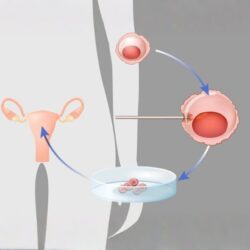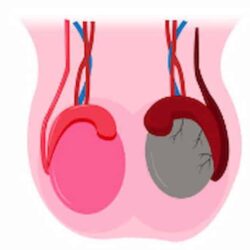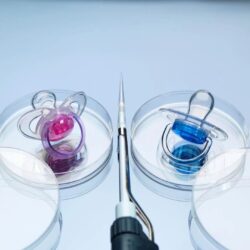What is Endometrial Receptivity Analysis ?
Understanding Endometrial Receptivity Analysis
Endometrial Receptivity Analysis (ERA) is a diagnostic test that evaluates the endometrial lining to determine the optimal window for embryo implantation during fertility treatment. This test is designed to assess the receptivity of the endometrium to ensure the embryo can successfully attach and develop. Understanding the results of an ERA test is crucial in customizing treatment plans to maximize the chances of a successful pregnancy.
During an ERA test, a small biopsy of the endometrial lining is taken and analyzed to identify the gene expression levels at specific points in the menstrual cycle. This information helps fertility specialists determine the most fertile window for embryo transfer. By conducting an ERA test, healthcare providers can tailor the timing of embryo transfer to increase the likelihood of successful implantation.
The results of an ERA test provide valuable insights into the receptivity of the endometrium and can guide treatment decisions for patients undergoing fertility treatment. By interpreting the gene expression patterns, healthcare providers can identify the optimal window for embryo transfer and improve the chances of a successful pregnancy. Understanding the significance of ERA in fertility treatment can help patients and their healthcare providers make informed decisions to achieve their reproductive goals.
Importance of ERA in Fertility Treatment
Endometrial Receptivity Analysis (ERA) plays a crucial role in fertility treatment as it helps determine the most optimal time for embryo transfer, increasing the chances of a successful pregnancy. By analyzing the receptivity of the endometrium, the ERA test provides valuable insights into the window of implantation, allowing fertility specialists to personalize treatment based on individual needs.
Understanding the specific receptivity status of the endometrium is essential for a successful embryo implantation. With the assistance of ERA, fertility clinics can pinpoint the precise timing for embryo transfer, reducing the risk of implantation failure and ultimately improving the chances of a successful pregnancy. This personalized approach based on ERA results can make a significant difference in the outcome of fertility treatments.
By conducting an ERA test, fertility specialists can tailor the timing of embryo transfer to each individual’s unique reproductive biology. This customized approach enhances the overall success rate of fertility treatments, leading to higher pregnancy rates and lower miscarriage rates. Understanding the importance of ERA in fertility treatment is crucial for maximizing the chances of achieving a successful pregnancy for those struggling with infertility.
Process of Conducting an ERA Test
Endometrial Receptivity Analysis, commonly known as ERA, is a vital step in the fertility treatment process for couples struggling with infertility. This test helps to determine the receptivity of the endometrium, or the lining of the uterus, to the embryo. In order to conduct an ERA test, the first step is to schedule an appointment with a fertility specialist who will guide you through the process.
The next step involves preparing the endometrium for the test. This usually includes taking medications to ensure that the endometrium is at the right stage of development for the ERA test to be accurate. The actual test involves a biopsy of the endometrial lining, which is then sent to a lab for analysis. The results of the ERA test will provide valuable information about the best time for embryo transfer.
Interpreting the results of the ERA test is crucial in customizing the fertility treatment plan for each individual patient. This information allows the fertility specialist to determine the optimal window for embryo transfer, increasing the chances of successful implantation and pregnancy. Overall, the process of conducting an ERA test is a crucial step in the fertility treatment journey for couples struggling with infertility.
Interpreting Results of Endometrial Receptivity Analysis
Endometrial Receptivity Analysis (ERA) is a crucial test that provides valuable information about the receptivity of the endometrium in a woman’s uterus. During this test, a small sample of the endometrial tissue is collected and analyzed to determine the optimal window of implantation for embryos. The results of an ERA test can help fertility specialists customize the timing of embryo transfer for each individual patient based on their unique hormonal profile.
Interpreting the results of an ERA test involves analyzing the genetic expression pattern of the endometrial tissue sample. By comparing the gene expression levels to a reference database, fertility experts can determine whether the endometrium is in a receptive or non-receptive state. A receptive endometrium indicates that the window of implantation is open, while a non-receptive endometrium suggests that the timing of embryo transfer needs to be adjusted.
Understanding the implications of ERA results is essential for maximizing the chances of a successful embryo implantation. By accurately interpreting the results of an ERA test, fertility specialists can provide personalized treatment plans that are tailored to each patient’s specific needs. This personalized approach can significantly improve the outcomes of fertility treatments and increase the likelihood of a successful pregnancy.
Impact of ERA on Embryo Implantation
Embryo implantation is a critical step in the process of fertility treatment, as it determines the success of the pregnancy. Understanding the role of Endometrial Receptivity Analysis (ERA) in this process is essential for ensuring a successful outcome for patients undergoing assisted reproduction.
The ERA test provides valuable insights into the receptivity of the endometrium, or the uterine lining, to the embryo. By analyzing the expression of genes related to implantation, the ERA test helps identify the optimal window of implantation for each individual patient, thereby increasing the chances of successful embryo implantation.
Customizing treatment based on the results of the ERA test allows fertility specialists to tailor the timing of embryo transfer to the specific needs of each patient. This personalized approach can significantly improve the success rates of assisted reproduction cycles, leading to higher pregnancy rates and reduced risks of implantation failure.
Benefits of Customizing Treatment based on ERA Results
Customizing fertility treatment based on the results of Endometrial Receptivity Analysis (ERA) can have significant benefits for patients undergoing assisted reproductive technology (ART) procedures. By understanding the receptivity of the endometrium, doctors can tailor treatment plans to optimize the chances of successful embryo implantation and pregnancy.
One of the key benefits of customizing treatment based on ERA results is the potential to increase the success rate of ART procedures. By identifying the ideal window of implantation for each individual patient, doctors can time embryo transfer more accurately, leading to higher pregnancy rates and reduced risk of implantation failure.








